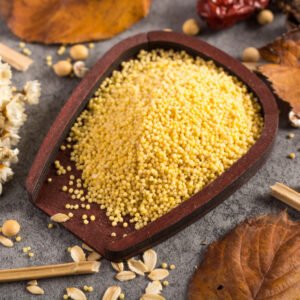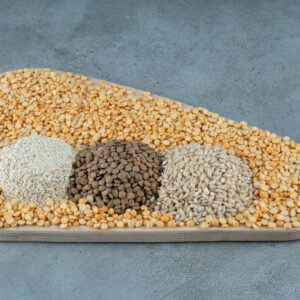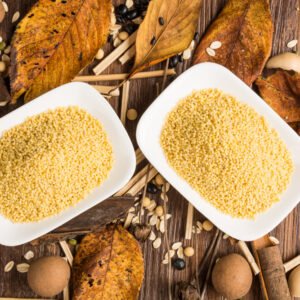Have you ever wondered what happens to soybeans after their oil is extracted?
If you’re involved in livestock farming or animal nutrition, you’ve probably heard of Soya De-Oiled Cake (Soya DOC) -but many people don’t fully understand what makes this byproduct so valuable for animal feed. As someone who’s seen firsthand how the right nutrition can transform livestock health and productivity, I want to share everything you need to know about this powerhouse ingredient.
In this blog, you’ll discover what Soya DOC really is, why it’s become the backbone of modern animal nutrition, and how it can dramatically improve your livestock’s health and performance.
What Exactly Is Soya De-Oiled Cake?
Let me break this down in simple terms.
Soya De-Oiled Cake is what remains after extracting oil from soybeans through a sophisticated solvent extraction process. Think of it like squeezing juice from an orange you get the juice (soybean oil in this case), and what’s left behind is the pulp (Soya DOC). But here’s where it gets interesting. This cake is manufactured from NON-GMO soya bean seeds under highly sophisticated multistage hygienically controlled processes, making it a premium protein source for livestock.
The extraction process concentrates all the good stuff proteins, amino acids, vitamins, and minerals – into a compact, nutrient-dense feed ingredient.
The Manufacturing Process
The journey from soybean to Soya DOC involves several crucial steps:
Step 1: Cleaning and Preparation Fresh soybeans are thoroughly cleaned to remove impurities, stones, and damaged beans.
Step 2: Oil Extraction The beans go through a multi-stage solvent extraction process that removes nearly all the oil content.
Step 3: Defatting and Drying The remaining cake is processed to remove residual solvents and achieve the right moisture content.
Step 4: Quality Control The final product undergoes rigorous testing to ensure it meets nutritional and safety standards.
Why Soya DOC Is a Nutritional Powerhouse for Animals
Here’s what makes Soya DOC special – it’s like a vitamin-packed energy bar for your livestock.
Exceptional Protein Content
Soybean meal is characterised by a high protein content from 43 to 53% as fed and a low crude fibre content. This means your animals get maximum protein with minimal filler content. For comparison, most other plant-based protein sources barely reach 30-35% protein content.
Complete Amino Acid Profile
It has a very good amino acid balance and contains high amounts of lysine, tryptophane, threonine all essential amino acids that animals cannot produce on their own. Think of amino acids as building blocks for muscle development, milk production, and overall growth.
Rich Mineral Content
Its rich blend of vitamins and minerals, including phosphorus, calcium, and magnesium, promotes optimal growth and productivity.
These minerals are crucial for:
- Strong bone development
- Proper metabolic functions
- Enhanced immune system response
- Better reproductive performance
Digestive Health Benefits
With its high fiber content, Soya DOC supports digestive health, helping animals maintain healthy gut function and better nutrient absorption.
How Different Animals Benefit from Soya DOC
Let me share how various livestock species thrive on Soya DOC supplementation.
Dairy Cattle and Buffalo
For dairy farmers, Soya DOC is a game-changer.
For dairy cattle (cows, buffaloes): Recommended daily feed is 15-20% of total feed, combined with green fodder.
Benefits include:
- Increased milk yield – The high protein content directly translates to better milk production
- Improved milk quality – Better fat and protein ratios in milk
- Enhanced reproductive performance – Better conception rates and shorter calving intervals
- Stronger immunity – Reduced veterinary costs and healthier animals
Poultry Farming
Whether you’re raising chickens, ducks, or turkeys, Soya DOC delivers exceptional results. For poultry (chickens, ducks, turkeys, quails, pigeons): Recommended daily feed is 5-10% of total diet mixed with grains and minerals.
Key advantages:
- Faster growth rates – Birds reach market weight quicker
- Better egg production – Higher laying rates and stronger eggshells
- Improved feed conversion – Less feed needed per kilogram of weight gain
- Enhanced meat quality – Better texture and nutritional value
Small Ruminants (Goats and Sheep)
For goats and sheep: Recommended daily feed is 10-15% of their total diet.
Results you’ll notice:
- Better weight gain – Especially important for meat production
- Improved wool quality – In sheep, better fleece quality and quantity
- Enhanced milk production – For dairy goats
- Stronger disease resistance – Healthier, more resilient animals
Economic Benefits of Using Soya DOC
Let’s talk numbers – because good nutrition should also make economic sense.
Cost-Effective Protein Source
Compared to other high-protein feeds, Soya DOC offers exceptional value for money.
While fish meal might cost ₹80-100 per kg, quality Soya DOC typically costs around ₹28-35 per kg, giving you similar protein benefits at a fraction of the cost.
Improved Feed Conversion Ratios
It has a high metabolizable energy concentration with crude protein concentration of about 38 percent. This means animals convert feed to body weight or milk more efficiently, reducing your overall feed costs.
Reduced Veterinary Expenses
Healthier animals mean fewer disease outbreaks and lower medication costs. The improved immunity from quality nutrition can save you thousands in veterinary bills annually.
Quality Indicators to Look For
Not all Soya DOC is created equal.
Here’s what to check when sourcing:
Protein Content
Look for minimum 46-48% crude protein content.
Moisture Levels
Should be below 12% to prevent spoilage and mould growth.
Colour and Texture
Good quality Soya DOC has a light golden-brown colour and fine, uniform texture.
Anti-Nutritional Factors
Ensure proper heat treatment has been done to neutralise trypsin inhibitors and other anti-nutritional compounds.
Aflatoxin Levels
Must be within permissible limits as per Indian standards.
How CMS Industries Ensures Premium Quality
At CMS Industries, we understand that quality animal feed ingredients directly impact your livestock’s performance and your profitability. As one of India’s leading agricultural product manufacturers and exporters, we’ve built our reputation on delivering consistent, high-quality Soya DOC that meets international standards. Our rigorous quality control processes ensure that every batch of Soya DOC maintains optimal protein content, proper amino acid profiles, and is free from harmful contaminants.
Located in Kachchh, Gujarat, we’ve been serving farmers and feed manufacturers across India for over two decades, understanding the unique nutritional needs of Indian livestock.
Storage and Handling Best Practices
Proper storage is crucial for maintaining Soya DOC quality.
Storage Conditions
- Dry environment – Moisture content should remain below 12%
- Cool temperature – Avoid direct sunlight and high temperatures
- Good ventilation – Prevents condensation and mould growth
- Pest control – Regular monitoring for insects and rodents
Shelf Life
When stored properly, Soya DOC can maintain its nutritional value for 6-8 months.
Mixing Guidelines
Always mix gradually with other feed ingredients to ensure uniform distribution and prevent selective feeding by animals.
Common Mistakes to Avoid
Here are pitfalls I’ve seen farmers make with Soya DOC:
Over-feeding
More isn’t always better – stick to recommended feeding rates to avoid digestive issues.
Ignoring Quality
Cheap, low-quality Soya DOC can actually cost you more in the long run through poor animal performance.
Improper Storage
Moisture damage can destroy nutritional value and create harmful toxins.
Sudden Diet Changes
Always transition gradually when introducing Soya DOC to avoid digestive upset.
The Future of Soya DOC in Animal Nutrition
The demand for high-quality animal protein is growing rapidly in India. With increasing awareness about livestock nutrition and the push for better productivity, Soya DOC will continue playing a crucial role in modern animal farming.
Innovations in processing technology are making Soya DOC even more digestible and nutritious, while sustainable farming practices ensure a steady supply of quality soybeans.
Conclusion
Soya De-Oiled Cake isn’t just another feed ingredient it’s a nutritional powerhouse that can transform your livestock operation. From improved milk production in dairy cattle to faster growth rates in poultry, the benefits are clear and measurable. The key is sourcing quality Soya DOC from reliable suppliers who understand the importance of consistent nutritional profiles.
Whether you’re a small-scale farmer or running a commercial livestock operation, incorporating the right amount of Soya De-Oiled Cake in your animal feed strategy can deliver impressive results for both animal health and your bottom line.
Frequently Asked Questions
Q1: What is the ideal protein content in Soya De-Oiled Cake?
Quality Soya DOC should contain 46-48% crude protein with a balanced amino acid profile for optimal animal nutrition and growth performance.
Q2: Can Soya DOC completely replace other protein sources in animal feed?
While Soya DOC is excellent, it works best when combined with other ingredients to create a balanced diet rather than being the sole protein source.
Q3: How much Soya DOC should I feed my dairy cows daily?
For dairy cattle, feed 15-20% of total daily feed as Soya DOC, always combined with adequate green fodder and other nutrients.
Q4: Is Soya DOC safe for all types of livestock?
Yes, properly processed Soya DOC is safe for cattle, buffalo, poultry, goats, sheep, and fish when fed in recommended quantities.
Q5: What’s the difference between Soya DOC and regular soybean meal?
Soya DOC undergoes solvent extraction removing more oil, resulting in higher protein concentration and better shelf life compared to regular soybean meal.





